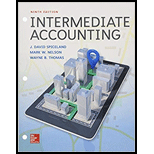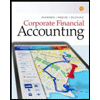
Concept explainers
Accounting cycle through unadjusted
• LO2–2, LO2–3
Halogen Laminated Products Company began business on January 1, 2018. During January, the following transactions occurred:
| Jan. 1 | Issued common stock in exchange for $100,000 cash. |
| 2 | Purchased inventory on account for $35,000 (the perpetual inventory system is used). |
| 4 | Paid an insurance company $2,400 for a one-year insurance policy. |
| 10 | Sold merchandise on account for $12,000. The cost of the merchandise was $7,000. |
| 15 | Borrowed $30,000 from a local bank and signed a note. Principal and interest at 10% is to be repaid in six months. |
| 20 | Paid employees $6,000 salaries and wages for the first half of the month. |
| 22 | Sold merchandise for $10,000 cash. The cost of the merchandise was $6,000. |
| 24 | Paid $15,000 to suppliers for the merchandise purchased on January 2. |
| 26 | Collected $6,000 on account from customers. |
| 28 | Paid $1,000 to the local utility company for January gas and electricity. |
| 30 | Paid $4,000 rent for the building. $2,000 was for January rent, and $2,000 for February rent. |
Required:
1. Prepare general
2.
3. Prepare an unadjusted trial balance as of January 30, 2018.
1.
Journal:
Journal is the book, where the debit and credit entries of the accounting transactions are recorded in a chronological order. Every company must follow at least the basic form of journal called the ‘General journal’.
Journal entry:
Journal entry is a set of economic events which can be measured in monetary terms. These are recorded chronologically and systematically.
Accounting rules for Journal entries:
- To record increase balance of account: Debit assets, expenses, losses and credit liabilities, capital, revenue and gains.
- To record decrease balance of account: Credit assets, expenses, losses and debit liabilities, capital, revenue and gains.
T-account:
- T-account is the form of the ledger account, where the journal entries are posted to this account. It is referred to as the T-account, because the alignment of the components of the account resembles the capital letter ‘T’.
- The components of the T-account are as follows:
-
- a) The title of the account
- b) The left or debit side
- c) The right or credit side
Unadjusted trial balance:
The unadjusted trial balance is the summary of all the ledger accounts that appears on the ledger accounts before making adjusting journal entries.
To Prepare: The general journal entries to record each transaction.
Explanation of Solution
Prepare journal entry for January month transactions.
| Date | Account Title and Explanation | Post Ref | Debit($) | Credit($) |
| January 1 2018 | Cash (A+) | 100,000 | ||
| Common Stock (E+) | 100,000 | |||
| (To record the issuance of common stock) | ||||
| January 2 2018 | Inventory (A+) | 35,000 | ||
| Accounts Payable (L+) | 35,000 | |||
| (To record the purchase of inventory on account) | ||||
| January 4 2018 | Prepaid Insurance (A+) | 2,400 | ||
| Cash (A–) | 2,400 | |||
| (To record the payment of insurance expense in advance) | ||||
| January 10 2018 | Accounts Receivable(A+) | 12,000 | ||
| Sales revenue (E+) | 12,000 | |||
| Cost of goods sold (E-) | 7,000 | |||
| Inventory (A-) | 7,000 | |||
| (To record a credit sale and the cost of credit sale) | ||||
| January 15 2018 | Cash (A+) | 30,000 | ||
| Notes Payable (L+) | 30,000 | |||
| (To record borrowed cash on notes payable) | ||||
| January 20 2018 | Salary and Wages Expense (E–) | 6,000 | ||
| Cash (A–) | 6,000 | |||
| (To record the payment of salary and wages expense in cash) | ||||
| January 22 2018 | Cash(A+) | 10,000 | ||
| Sales revenue (E+) | 10,000 | |||
| Cost of goods sold (E-) | 6,000 | |||
| Inventory (A-) | 6,000 | |||
| (To record a cash sale for the month and the cost of that sale) | ||||
| January 24 2018 | Accounts Payable (L–) | 15,000 | ||
| Cash (A–) | 15,000 | |||
| (To record the payment of cash on account) | ||||
| January 26 2018 | Cash (A+) | 6,000 | ||
| Accounts Receivable (A–) | 6,000 | |||
| (To record the cash received on account) | ||||
| January 28 2018 | Utility Expense (E–) | 1,000 | ||
| Cash (A–) | 1,000 | |||
| (To record the payment of utility expense in cash) | ||||
| January 30 2018 | Prepaid Rent (A+) | 2,000 | ||
| Rent Expense (E | 2,000 | |||
| Cash (A-) | 4,000 | |||
| (To record the payment of rent expenses in advance) |
Table (1)
2.
To Post: The entries to T-accounts.
Explanation of Solution
Post the entries to T-accounts.
Cash:
Cash Account
| January 1 | 0 | ||||
| January 1 | $100,000 | January 4 | $2,400 | ||
| January 15 | $30,000 | January 20 | $6,000 | ||
| January 22 | $10,000 | January 24 | $15,000 | ||
| January 26 | $6,000 | January 28 | $1,000 | ||
| January 30 | $4,000 | ||||
| January 31 | $117,600 | ||||
Inventory:
Inventory Account
| January 1 | 0 | ||||
| January 2 | $35,000 | January 10 | $7,000 | ||
| January 22 | $6,000 | ||||
| January 31 | $22,000 |
Prepaid Rent:
Prepaid Rent Account
| January 1 | 0 | ||||
| January 30 | $2,000 | ||||
| January 31 | $2,000 |
Notes Payable:
Notes Payable Account
| January 1 | 0 | ||||
| January 15 | $30,000 | ||||
| January 31 | $30,000 |
Accounts Receivable:
Accounts Receivable Account
| January 1 | 0 | ||||
| January 10 | $12,000 | January 26 | $6,000 | ||
| January 31 | $6,000 |
Prepaid Insurance:
Prepaid Insurance Account
| January 1 | 0 | ||||
| January 4 | $2,400 | ||||
| January 31 | $2,400 |
Accounts Payable:
Accounts Payable Account
| January 1 | 0 | ||||
| January 24 | $15,000 | January 2 | $35,000 | ||
| January 31 | $20,000 |
Common Stock:
Common Stock Account
| January 1 | 0 | ||||
| January 1 | $100,000 | ||||
| January 31 | $100,000 |
Sales Revenue:
Sales Revenue Account
| January 1 | 0 | ||||
| January 10 | $12,000 | ||||
| January 22 | $10,000 | ||||
| January 31 | $22,000 |
Salaries and Wages Expense:
Salaries and Wages Expense Account
| January 1 | 0 | ||||
| January 20 | $6,000 | ||||
| January 31 | $6,000 |
Utilities Expense:
Utilities Expense Account
| January 1 | 0 | ||||
| January 28 | $1,000 | ||||
| January 31 | $1,000 |
Cost of Goods Sold:
Cost of Goods Sold Account
| January 1 | 0 | ||||
| January 10 | $7,000 | ||||
| January 22 | $6,000 | ||||
| January 31 | $13,000 |
Rent Expense:
Rent Expense Account
| January 1 | 0 | ||||
| January 30 | $2,000 | ||||
| January 31 | $2,000 |
3.
To Prepare: An unadjusted trial balance as of January 30, 2018.
Explanation of Solution
Prepare an unadjusted trial balance as of January 31, 2018.
| Account Title | Debit ($) | Credit ($) |
| Cash | 117,000 | |
| Accounts Receivable | 6,000 | |
| Inventory | 22,000 | |
| Prepaid insurance | 2,400 | |
| Prepaid rent | 2,000 | |
| Accounts payable | 20,000 | |
| Notes payable | 30,000 | |
| Common stock | 100,000 | |
| Sales revenue | 22,000 | |
| Cost of goods sold | 13,000 | |
| Salaries and wages expense | 6,000 | |
| Utilities expense | 1,000 | |
| Rent expense | 2,000 | |
| Totals | 172,000 | 172,000 |
Table (2)
Want to see more full solutions like this?
Chapter 2 Solutions
INTERMEDIATE ACCOUNTING(LL)-W/CONNECT
- I am searching for the most suitable approach to this financial accounting problem with valid standards.arrow_forwardI am looking for the correct answer to this general accounting problem using valid accounting standards.arrow_forwardI am looking for the correct answer to this financial accounting question with appropriate explanations.arrow_forward
 Corporate Financial AccountingAccountingISBN:9781305653535Author:Carl Warren, James M. Reeve, Jonathan DuchacPublisher:Cengage LearningPrinciples of Accounting Volume 1AccountingISBN:9781947172685Author:OpenStaxPublisher:OpenStax College
Corporate Financial AccountingAccountingISBN:9781305653535Author:Carl Warren, James M. Reeve, Jonathan DuchacPublisher:Cengage LearningPrinciples of Accounting Volume 1AccountingISBN:9781947172685Author:OpenStaxPublisher:OpenStax College Financial Accounting: The Impact on Decision Make...AccountingISBN:9781305654174Author:Gary A. Porter, Curtis L. NortonPublisher:Cengage Learning
Financial Accounting: The Impact on Decision Make...AccountingISBN:9781305654174Author:Gary A. Porter, Curtis L. NortonPublisher:Cengage Learning Intermediate Accounting: Reporting And AnalysisAccountingISBN:9781337788281Author:James M. Wahlen, Jefferson P. Jones, Donald PagachPublisher:Cengage Learning
Intermediate Accounting: Reporting And AnalysisAccountingISBN:9781337788281Author:James M. Wahlen, Jefferson P. Jones, Donald PagachPublisher:Cengage Learning Cornerstones of Financial AccountingAccountingISBN:9781337690881Author:Jay Rich, Jeff JonesPublisher:Cengage Learning
Cornerstones of Financial AccountingAccountingISBN:9781337690881Author:Jay Rich, Jeff JonesPublisher:Cengage Learning




